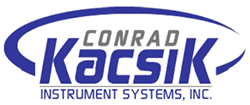Understanding Thermocouples and Their Use in Thermal Processing
In thermal processing, precision is critical. Maintaining accurate temperature control can directly impact product quality and compliance with industry standards like AMS2750. The heart of this necessary precision lies with the thermocouple—the temperature sensors that ensure accurate measurement of temperature during the heat treatment process.
In this article, we are going to explore thermocouples and their use in pyrometry. We’ll discuss the basics of how they work, the different types available, and the calibration requirements you need to meet for compliance. By the end, you’ll have a better understanding of how to make informed decisions for your heat-treat operations.
What Are Thermocouples?
A thermocouple is a temperature sensor made by joining two dissimilar metal wires at one end to form a junction. When this junction is exposed to heat, it produces a small voltage—known as electromotive force (EMF)—that corresponds to the temperature at the junction. This voltage can then be measured and converted into a temperature reading. It’s a simple concept, but one that forms the backbone of pyrometry and accurate temperature control in thermal processing.
Heat treatment and thermal processing applications require precise control of temperatures that can reach thousands of degrees Fahrenheit. Thermocouples provide the reliable, real-time data needed to maintain that control.
Types of Thermocouples
Thermocouples aren’t one-size-fits-all. Different processes, materials, and environments require different types of thermocouples, each with unique properties and temperature ranges. Choosing the right type of thermocouple is critical to maintaining accuracy, ensuring compliance with standards like AMS2750, and protecting your product quality.
Common Thermocouple Types & Their Uses
The type of thermocouple is determined by the metal that’s used. Depending on the combination of metal, a thermocouple can be more accurate, better suited for a range of temperatures, and so on. Here are a few examples:
- The most common type of thermocouple is a Type K thermocouple (nickel-chromium and nickel-alumel), which has a wide temperature range and solid accuracy.
- Type S thermocouples (platinum-based) are extremely accurate at high temperatures, making them great for heat treatment of aerospace components that have extremely tight tolerances in the heat treatment process.
- Type T thermocouples (copper and constantan) are much more accurate at lower temperatures, and will often be used in laboratory environments.
Here are some of the different types of thermocouples that are often used in heat treatment:
| Type | Composition (Metals) | Temperature Range (°F) | Typical Use Cases |
| Type K | Chromel (+) / Alumel (-) | -328 to 2,282 | General-purpose use, furnace monitoring, load sensors in non-vacuum environments. Best for oxidizing atmospheres. |
| Type N | Nicrosil (+) / Nisil (-) | -454 to 2,300 | Improved stability over Type K, ideal for long-term use in high-temperature environments. |
| Type S | Platinum (90%) / Rhodium (10%) | 32 to 2,912 | High-accuracy, used in vacuum furnaces or critical processes like aerospace heat treating. Often for overtemperature protection or furnace monitoring. |
| Type R | Platinum (87%) / Rhodium (13%) | 32 to 3,092 | Similar to Type S but slightly higher output, used for precise applications requiring exceptional stability. |
How Thermocouples Are Used In Heat Treatment
In general, thermocouples are used in heat treatment for three different reasons:
- Furnace Monitoring Thermocouples: Thermocouples track furnace temperatures to ensure they remain within the specified ranges for various heat-treat processes like annealing, hardening, or tempering. Type K and Type N are widely used here for general furnace monitoring, especially in air or controlled atmospheres. In vacuum furnaces or environments with inert gases, Type S or Type R thermocouples are preferred due to their superior stability at high temperatures and resistance to contamination.
- Load Thermocouples: In heat treating, it’s not enough to monitor just the furnace environment—you also need to measure the temperature of the load itself (the parts being processed). For critical aerospace applications or processes requiring tighter tolerances, Type N or noble metal thermocouples (S, R) may be used, especially when parts are exposed to vacuum or high partial pressures.
- Survey Thermocouples: These thermocouples are used during Temperature Uniformity Surveys (TUS) and System Accuracy Tests (SAT), which validate furnace performance and ensure compliance with AMS2750.
Calibration Requirements for AMS2750
AMS2750 governs the pyrometry requirements for thermal processing equipment, covering everything from temperature sensors and instrumentation to System Accuracy Tests (SAT) and Temperature Uniformity Surveys (TUS).
One of the key components of AMS2750 is calibration. To meet these rigorous standards—and maintain certifications like Nadcap—your equipment must undergo regular calibration to verify its accuracy.
Thermocouples must be calibrated at specific intervals based on their type (expendable or nonexpendable) and their role (furnace monitoring, load sensing, survey). AMS2750 outlines the required accuracy in terms of Special Limits of Error (SLE), which are tighter than standard industrial tolerances. Here are some of the SLE’s for different types of thermocouples:
- Type K: ±1.1°C or 0.4% (whichever is greater)
- Type N: ±1.1°C or 0.4%
- Type R/S: ±0.6°C or 0.1%
Regular calibration is required as thermocouples can degrade and “drift” over time, meaning they are less accurate. Thermocouples that no longer meet AMS2750 requirements must be replaced to ensure you stay compliant.
Want to Stay Compliant? Conrad Kacsik Can Help
With decades of experience supporting industries like aerospace, automotive, and medical, Conrad Kacsik offers comprehensive pyrometry services designed to keep your operations compliant and efficient.
Our services include:
- Thermocouple calibration
- Instrument calibration performed by ISO/IEC 17025-accredited technicians
- System Accuracy Testing (SAT) and Temperature Uniformity Surveys (TUS) aligned with AMS2750 and Nadcap requirements
- Consultative guidance to ensure your documentation and processes meet the latest revisions of AMS2750
We understand how critical compliance is to your operation's success. Our experts help ensure your systems are accurate, your documentation is audit-ready, and your profitability is protected. Contact us today to schedule a consultation or learn more about our pyrometry services.







